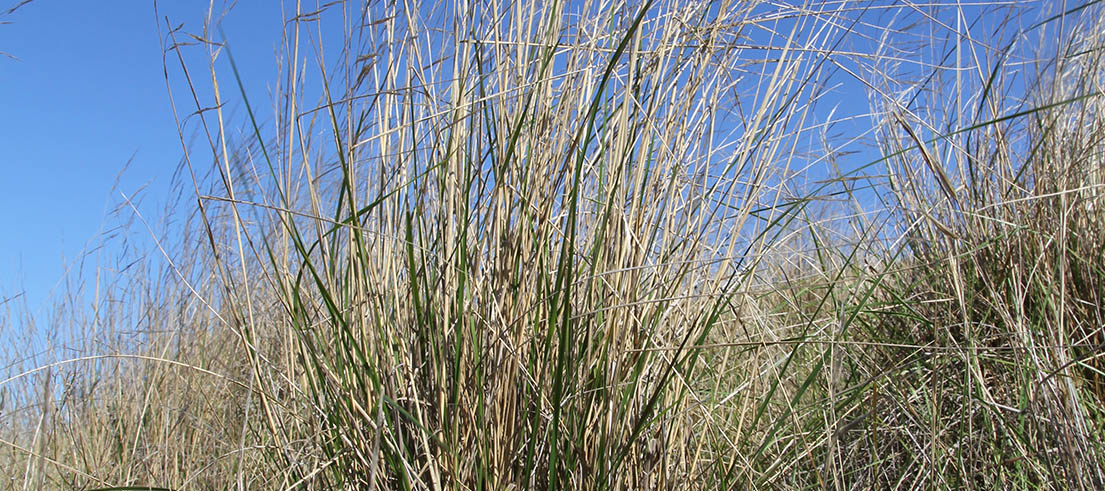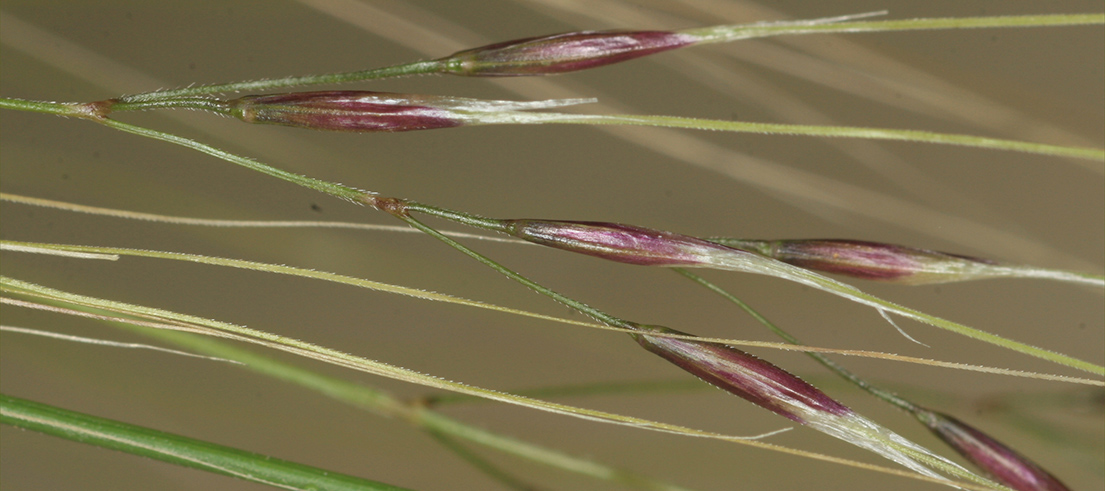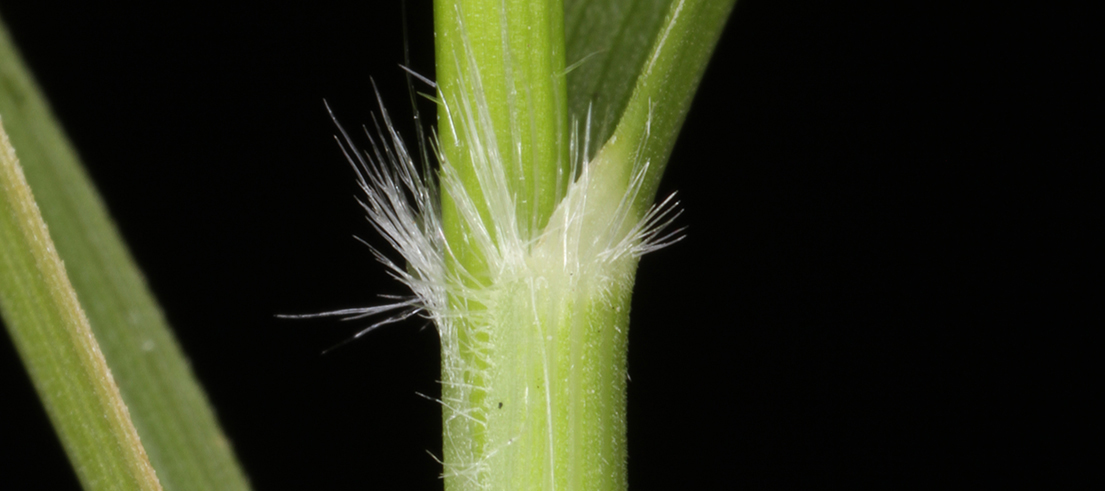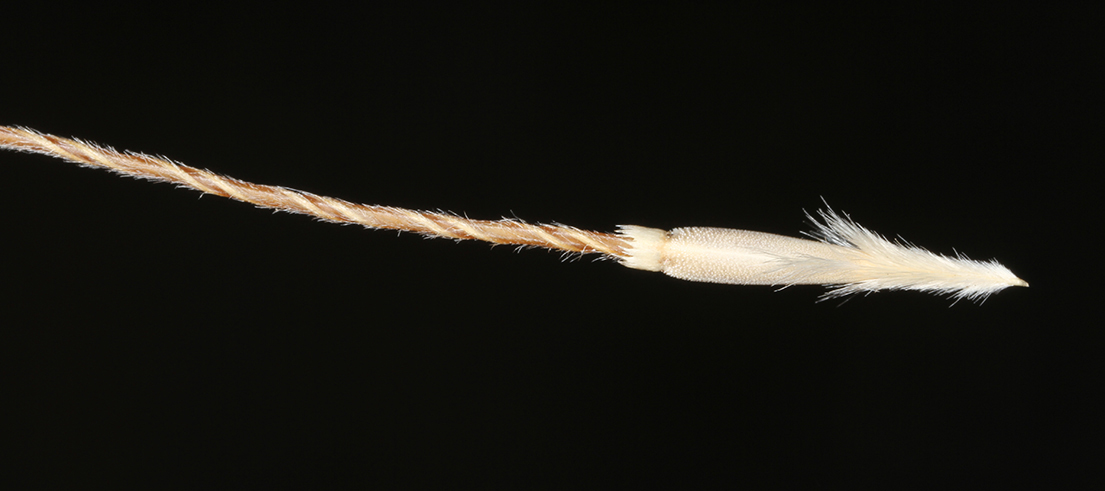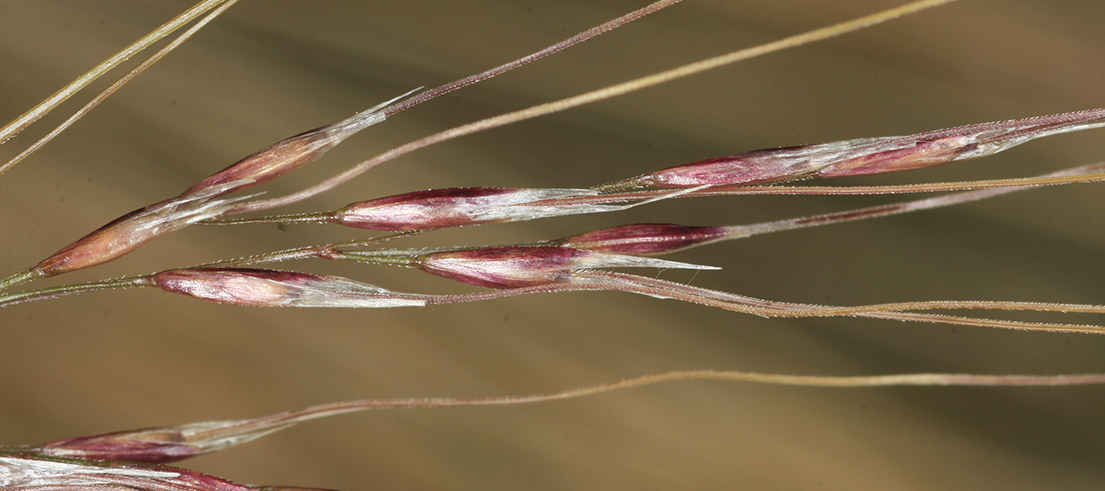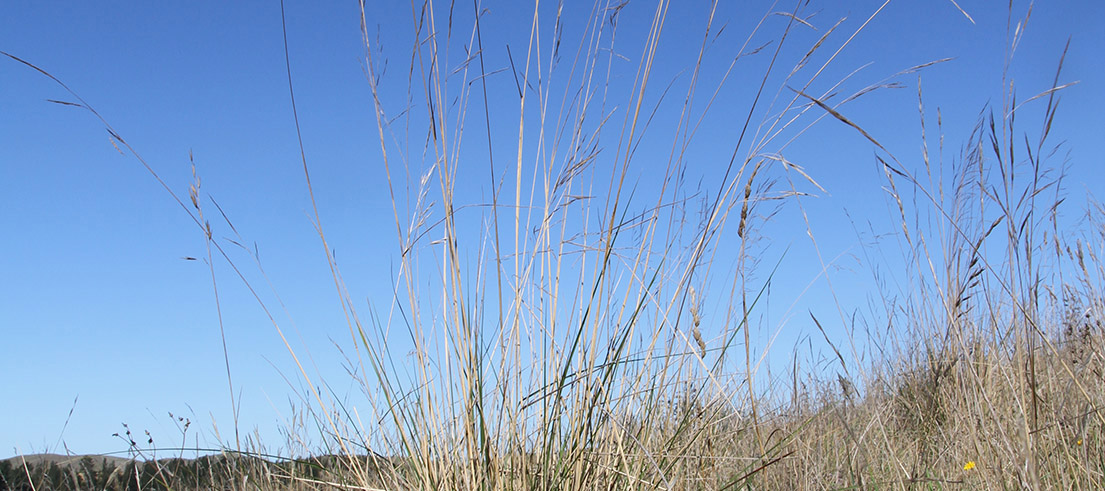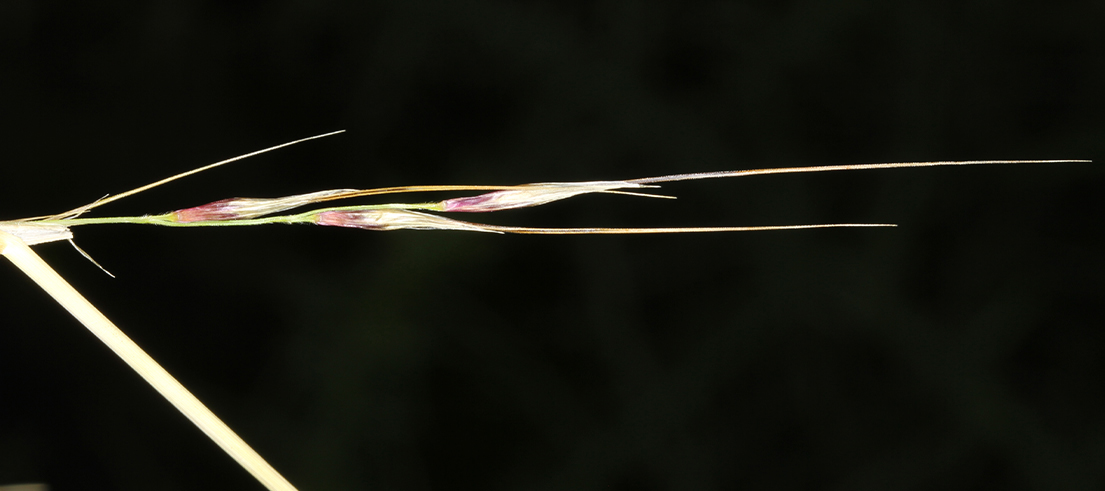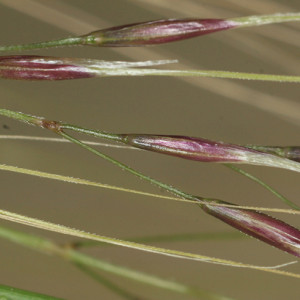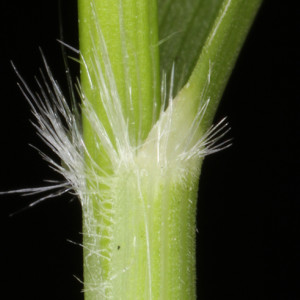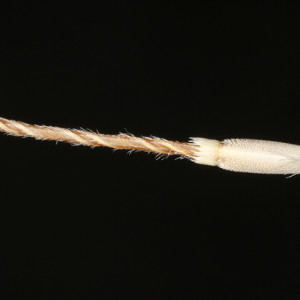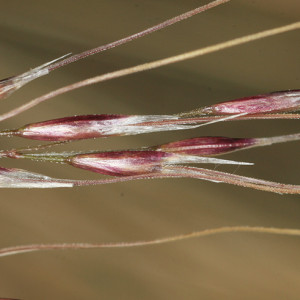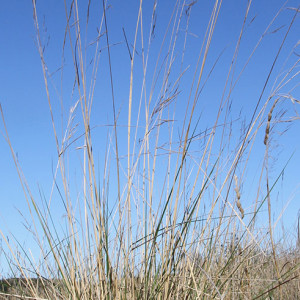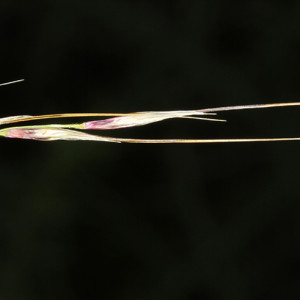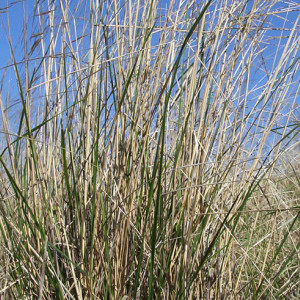Chilean needle grass is an erect, tufted, perennial grass around 1m high with hairy seeds. It can cause blindness in livestock as well as reduce agricultural land use.
Description
- It has bright green leaves, around 5mm wide, which are flat and rough to touch when stroked downwards towards the base.
- Flowerheads are large, drooping and purplish and occur in spring.
- Seed head is hard and hairy and has pointed and spear-like with a very sharp, penetrating base.
- Seeds occur in late spring to mid-summer.
- Seeds are dispersed by attachment to livestock and feral animals.
- Human-mediated dispersal through the movement of contaminated machinery, clothing and hay.
- Habitats include pastures, grasslands, roadsides, open areas, cliffs, lake and forest margins, and lawns.
What you need to know
Highly invasive in pasture and sharp seeds can penetrate pelts and cause blindness in livestock. Infestations can severely reduce agricultural land-use and profitability.
Management approach
This is a declared pest managed under the Canterbury Regional Management Plan 2018 – 2038 (PDF file, 10.6MB) within the sustained control programme.
Sustained control
Pests in the sustained control programme vary greatly in their distribution across the region. Some are found in low numbers, while others are already well-established pests.
The intention of the sustained control programme is to reduce the impact on values and spread of a pest onto neighbouring properties.
The community should make us aware of any Chilean needle grass plants in Waitaha/Canterbury. We will work with affected landowners to undertake control of Chilean needle grass.
Rules
Properties with a known occurrence of Chilean needle grass are required to eliminate all Chilean needle grass plants within 5m of adjoining property boundaries and hold and operate a Chilean needle grass management plan.
Land occupiers must either prevent Chilean needle grass from producing seeds or be party to a written management agreement.
Any species declared a pest cannot be sold or be in a place where plants are being sold. Pest plants cannot be propagated, bred, multiplied, communicated, released, caused to be released, or otherwise spread.
Control
Do not attempt to undertake control of Chilean needle grass yourself. Report any sightings to us, including if you think you have bought contaminated seed, stock, or feed.

